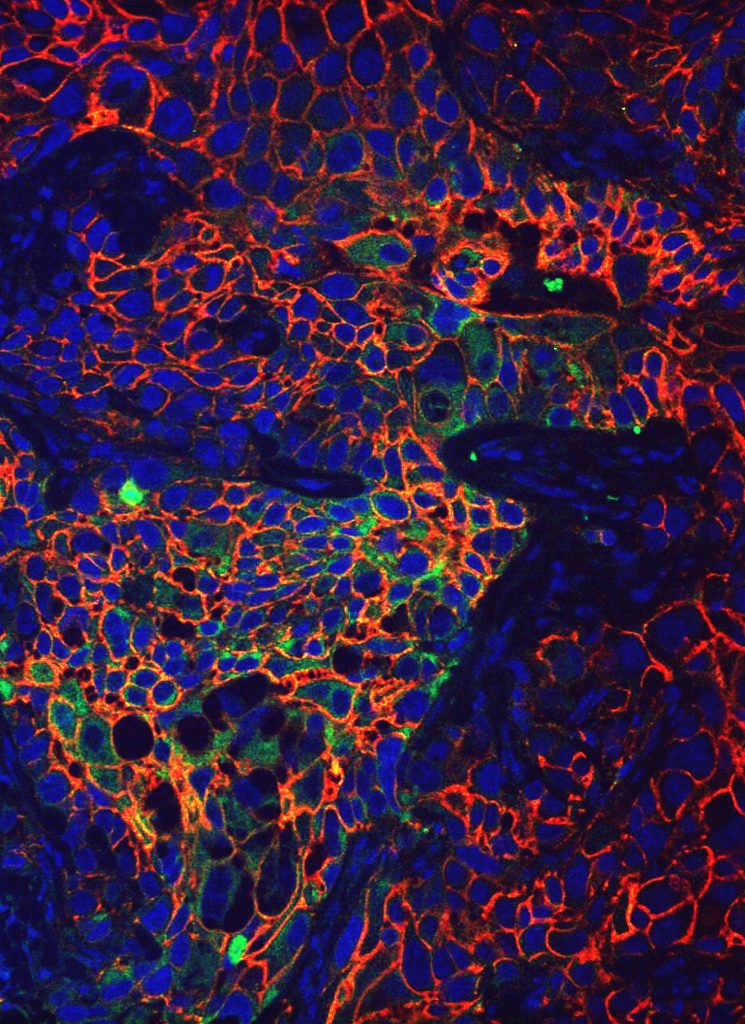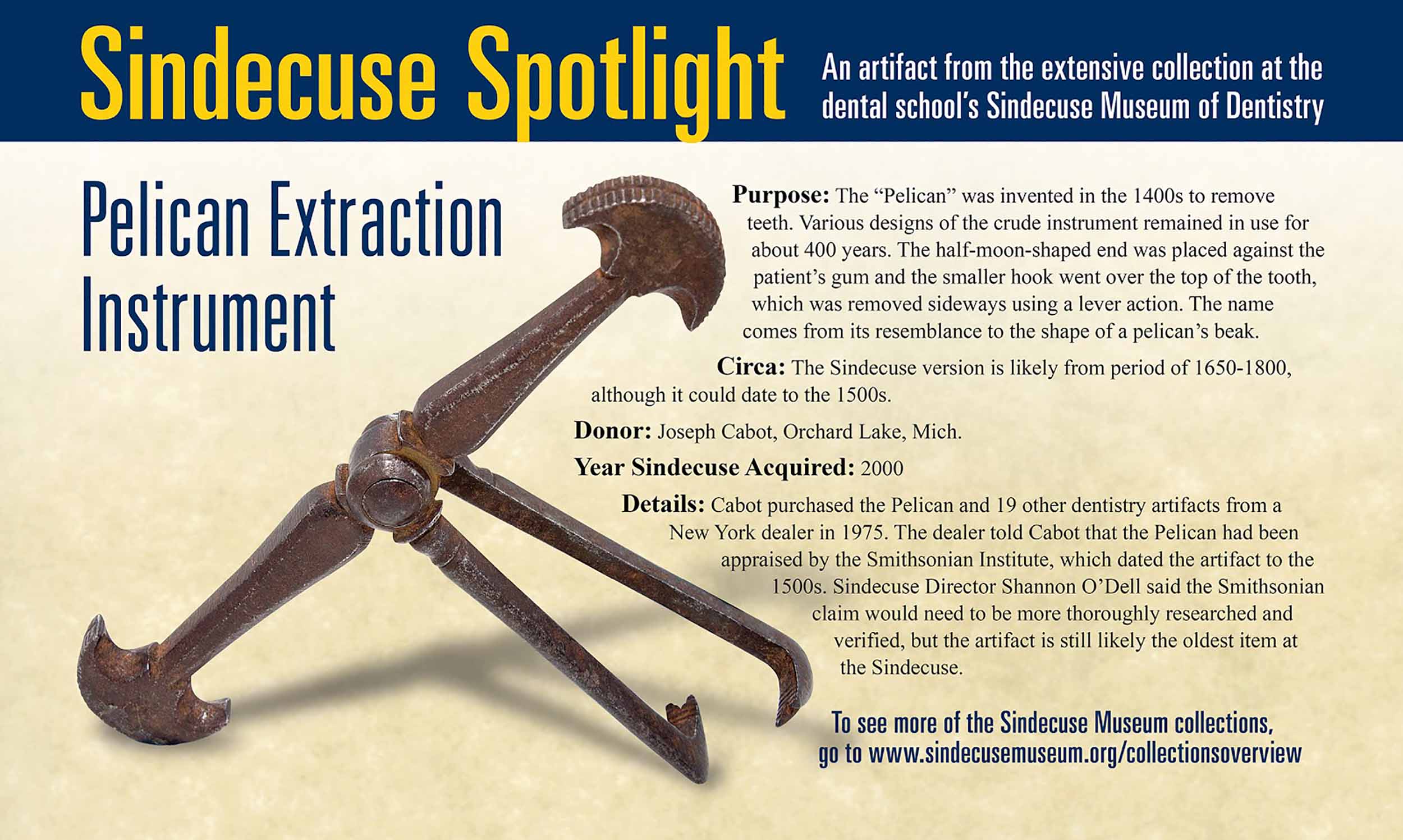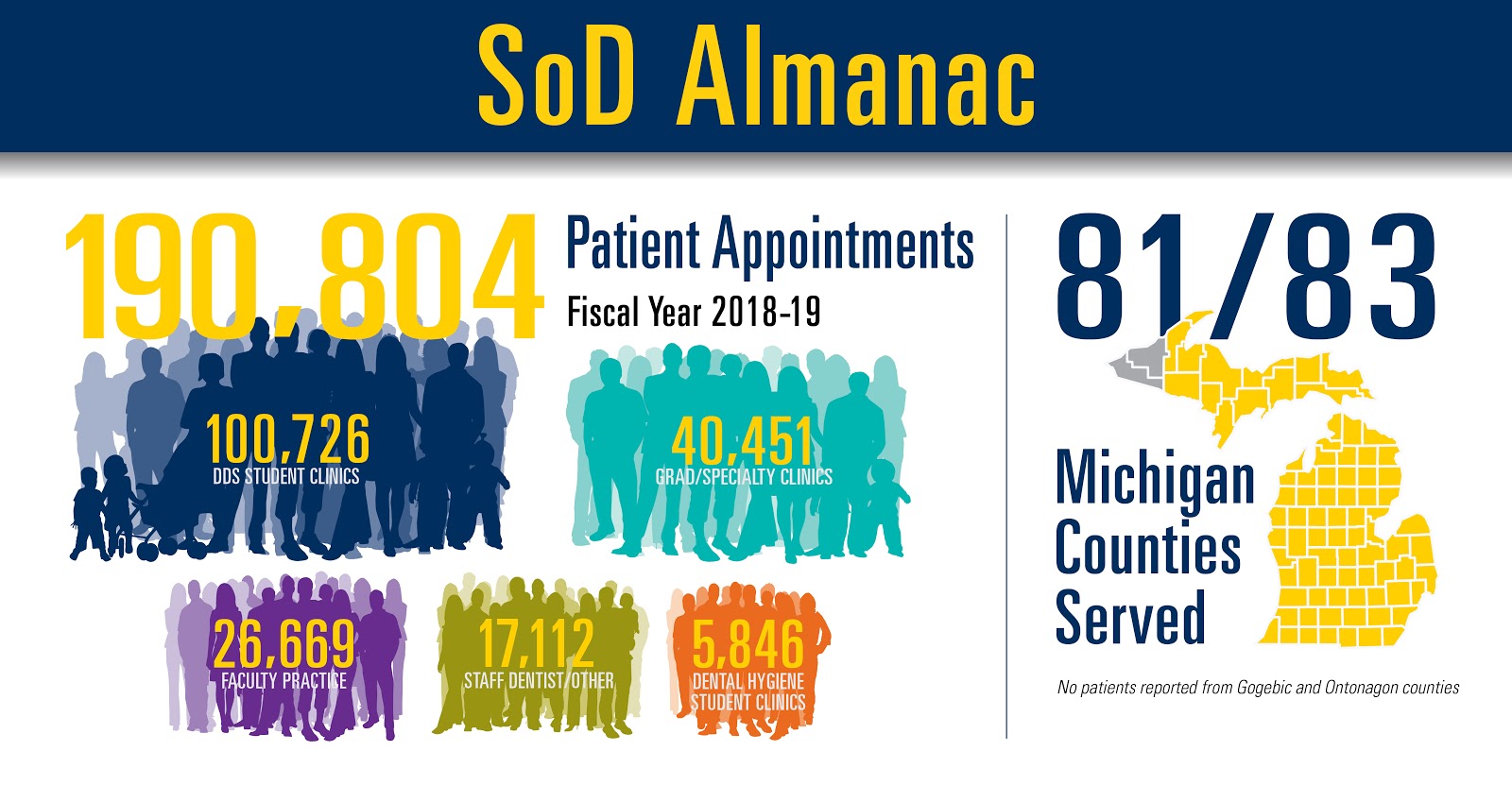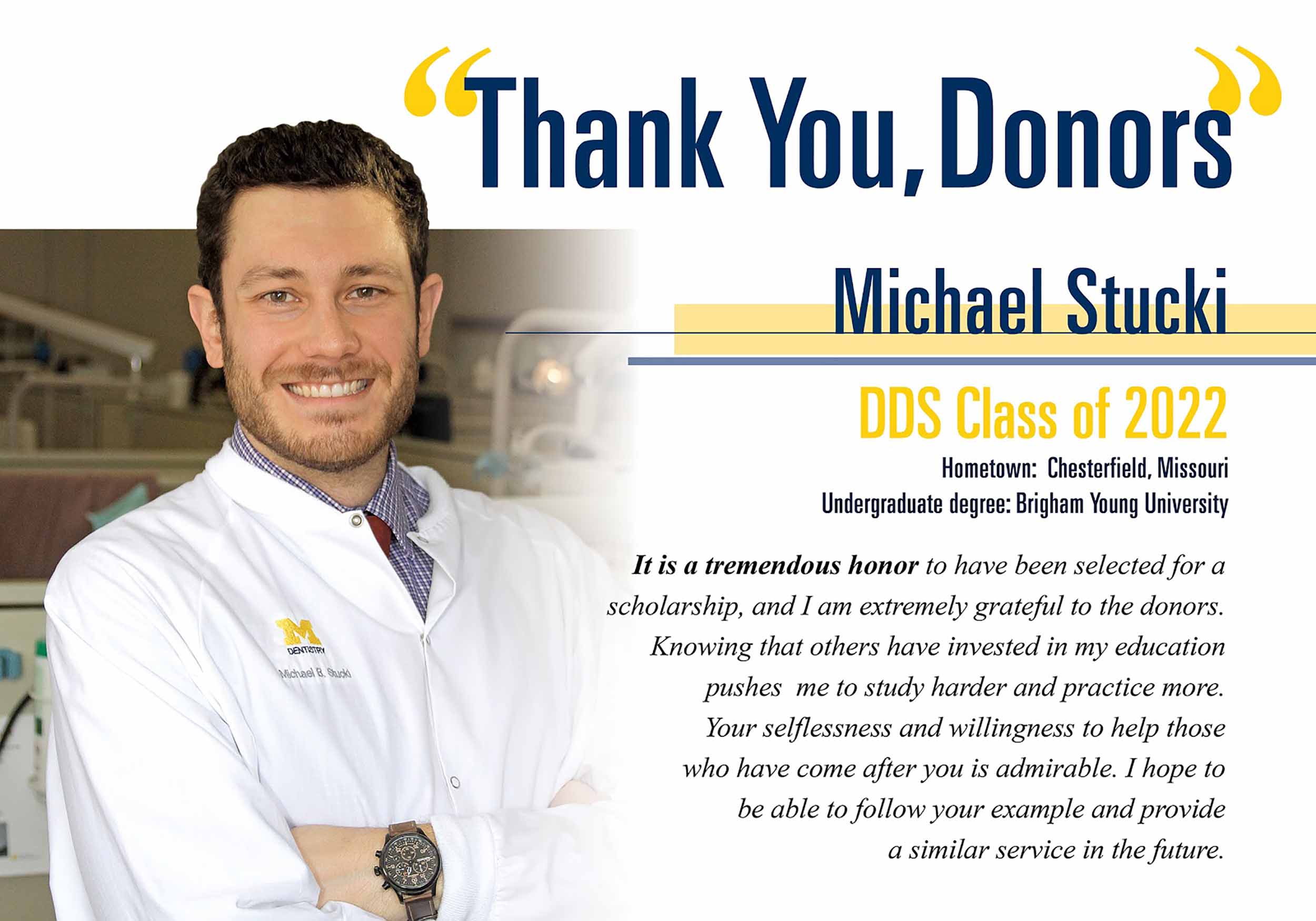Faculty published nearly 200 papers in leading journals in 2019
January 15, 2020
Ann Arbor, Mich. - With more than $25 million in annual research expenditures, the University of Michigan School of Dentistry is involved with scientific research that ranges from innovative clinical trials for dentistry to advancing our understanding of cancer to leading breakthroughs in new disciplines such as regenerative medicine.

Photomicrograph of a mucoepidermoid carcinoma stained for ALDH (green) and CD44 (red), two markers of cancer stem cells. DAPI (blue) identifies cell nuclei. Image taken at 200x. From Jacques Nör, et al, paper from Clinical Cancer Research.
This significant research by faculty is highlighted each year in leading scientific journals, helping to promote the development of new knowledge in the oral health sciences and related fields that contribute to improved health for people around the country and the world.
“Conducting research studies and sharing what we discover is the cornerstone of our research mission,” said Vesa Kaartinen, Associate Dean for Research. “Advancing research – basic, translational and clinical – helps impact new ways to improve oral healthcare and many related areas. The documentation of this work by our faculty is an integral and essential part of furthering insights into practice.”
In 2019, the school’s faculty published 187 papers, articles and reviews. Here are some of the top papers, based on overall impact, (with links to their PubMed abstracts):
- Clinical Cancer Research: Ablation of cancer stem cells by therapeutic inhibition of the MDM2–p53 interaction in mucoepidermoid carcinoma. This paper examines the effect of a small-molecule inhibitor on cancer stem cells in mucoepidermoid carcinoma, the most common malignant salivary gland tumor. The team used in vitro studies, human tissues, and mouse xenografts to show a decrease in the fraction of cancer stem cells upon treatment with this new drug, suggesting that patients might benefit from this new therapy. Authors: Jacques Nör, et al.
- PNAS: Autocrine regulation of mesenchymal progenitor cell fates orchestrates tooth eruption. This paper explores the required steps for tooth development. The findings reveal a unique mechanism whereby autocrine signaling creates the optimal conditions for proper cell differentiation and development. Authors: Wanida Ono, Noriaki Ono, et al.
- Oncogene: Non-murine models to investigate tumor-immune interactions in head and neck cancer. Pre-clinical models are used to study head-and-neck cancer progression and develop new treatments. Non-murine pre-clinical animal models are interesting alternatives to murine models as they present unique characteristics such as spontaneously-occurring tumors. Understanding the immunological aspects of these models is important to the data interpretation and the design of new studies assessing tumor-immune interactions and immunotherapeutic approaches. Authors: Nisha D’Silva, et al.
- Stem Cell Reports: Sox10 Regulates Plasticity of Epithelial Progenitors toward Secretory Units of Exocrine Glands. This paper presents insights into how exocrine glands establish specific cell lineages and form complex functional secretory units. While Sox10, a gene coding protein, is vital for organ regeneration, it is also an essential for cellular organ development and controls plasticity in secretory organs such as mammary, lacrimal, and salivary glands. Authors: Isabelle Lombaert, et al.
- Cancer Letters: Interference with the bromodomain epigenome readers drives p21 expression and tumor senescence. This paper documents how JQ1, a bromodomain inhibitor, disrupts head-and-neck cancer growth by triggering cellular senescence and disrupting the population of cancer stem cells. Authors: Rogerio Castilho, Cristiane Squarize, et al.
- Oncogene: Immune-relevant aspects of murine models of head and neck cancer. Murine models are the most widely used pre-clinical models in head-and-neck cancer research. Considering the interest and potential of immune-based therapies for head-and-neck cancer, this paper focuses on the immune-relevant characteristics of each murine model of head-and-neck cancer. Authors: Nisha D’Silva, et al.
- EBioMagazine: Serial patient-derived orthotopic xenografting of adenoid cystic carcinomas recapitulates stable expression of phenotypic alterations and innervation. This paper demonstrates a promising alternative to patient-derived xenograft (PDX) for cancer research. Using PDOX, or orthotopic xenotransplantation, in adenoid cystic carcinoma tumors, the team created a model that enabled solid tumors to integrate and grow. It provides potential as a superior tool for future cancer biology and therapy research. Authors: Isabelle Lombaert, et al.
- FASEB Journal: Hypoxic niches are endowed with a protumorigenic mechanism that supersedes the protective function of PTEN. The paper identifies that tumor hypoxic niches are poised to accumulate cancer stem cells through the local downregulation of the tumor suppressor gene PTEN. Targeted therapies to PTEN-associated pathway may counteract the development of cancer stem cells in hypoxic niches. Authors: Rogerio Castilho, Cristiane Squarize, et al.
- Journal of Dental Research: Genome Editing: A New Horizon for Oral and Craniofacial Research. This paper reviews genome editing techniques, including the CRISPR/Cas9 technique, for its application to the oral and craniofacial research community. Discussion also includes details about emerging applications of genome editing in oral and craniofacial biology. Authors: William Giannobile, Yuji Mishina, et al.
- Journal of Dental Research: Clodronate-Loaded Liposome Treatment Has Site-Specific Skeletal Effects. This paper looks at the role macrophages play in bone growth and in oral wound healing following tooth extraction. The results suggest that timing and location can impact the ability of macrophages to support normal cellular regrowth and healing. Authors: Hernan Roca, Laurie McCauley, et al.
- Journal of Dental Research: WDR72 Mutations Associated with Amelogenesis Imperfecta and Acidosis. This manuscript reports several gene mutations of WDR72 resulted in soft enamel, or hypomaturation amelogenesis imperfecta, and distal renal tubular acidosis. The results of this study support that dental enamel malformation is an early sign of WDR72 mutations, and such mutations consequently will impact kidney function of the affected individuals. Genetic testing of patients with amelogenesis imperfecta is critical to ensure accurate diagnosis and to improve prognosis. Authors: Jan Hu, et al.
To highlight research by faculty, students and staff, the school holds an annual Research Day, this year on Wednesday, Feb. 19. It includes research presentations, an exhibitor forum and an awards ceremony. A keynote address by Dr. Sarah Knox from University of California, San Francisco, is at 1 p.m. in the school’s Kellogg Auditorium. More information is available at: https://dent.umich.edu/research.




